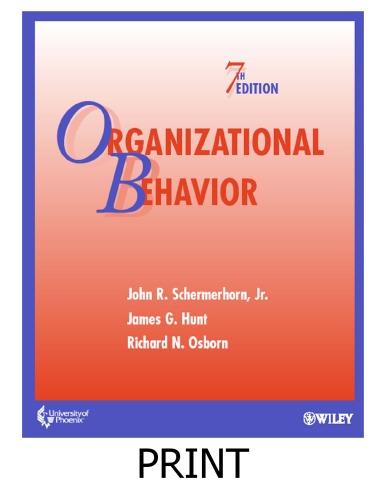MagRec, Incorporated was started in the late 1960s by Mr. Leed, a brilliant engineer (he has several
Question:
MagRec, Incorporated was started in the late 1960s by Mr. Leed, a brilliant engineer (he has several engineering patents), who was a group manager at Fairchild Republic. The company’s product was magnetic recording heads, a crucial device used for reading, writing, and erasing data on tapes and disks. Need for the product and its future potential was great. The computer industry was in its embryonic stage, and MagRec had virtually no serious competition. In fact, almost all magnetic head manufacturers today use methods, techniques, processes, and so on, that were developed and pioneered by MagRec.
Like any other startup, MagRec had a humble beginning. It struggled during the early years, facing cash-flow and technical problems. After a slow start, it began growing rapidly. In the mid-1970s it had captured 35 percent of the tape head market, making it the second largest supplier of MegaComputer computer tape heads in North America. Financially, the company suffered heavily in the early 1980s because of price erosions caused by Far East competition. Unlike all its competitors, the company resisted and never moved its manufacturing operations offshore. By the mid-1980s, the company had accumulated losses to a point of bankruptcy. Finally, plagued by a no-win situation, the company entered a major international joint venture, in which foreign governments agreed to participate as minority owners (20% equity). The company received blanket sales orders from Japanese firms (GME, Victor Data, Fijitsu, etc.). Things looked good once again. But . . . When Fred Marsh promoted me to Sales Manager, I was in seventh heaven. Now, six months later, I feel I am in hell. This is the first time in my life that I am really on my own. I have been working with other people all my life. I tried my best and what I could not solve, I took upstairs. Now it’s different because I am the boss (or am I?). Fred has taught me a lot. He was my mentor and gave me this job when he became vice-president. I have always respected him and listened to his judgment. Now thinking back I wonder whether I should have listened to him at all on this problem. It started one late Friday evening. I had planned to call my West Coast customer, Partco, to discuss certain contract clauses. I wanted to nail this one fast (Partco had just been acquired by Volks, Inc.). Partco was an old customer, in fact—through good and bad it had always stayed with us. It was also a major customer. I was about to call Partco when Dinah Coates walked in clutching a file. I had worked with Dinah for three years. She was good. I knew that my call to Partco would have to wait. Dinah had been cleaning out old files and came across a report about design and manufacturing defects in Partco heads. The report had been written nine years ago. The cover memo read as follows: To: Ken Smith, Director of Marketing From: Rich Grillo, V.P. Operations Sub: Partco Head Schedule This is to inform you that due to poledepth problems in design, the Partco heads (all 514 in test) have failed. They can’t reliably meet the reading requirements.* The problem is basically a design error in calculations. It can be corrected. However, the fix will take at least six months. Meanwhile Ron Scott in production informs me that the entire 5,000 heads (the year’s production) have aready been pole-slotted, thus they face the same problem. Ken, I don’t have to tell you how serious this is, but how can we o.k. and ship them to Partco knowing that they’ll cause read error problems in the field? My engineering and manufacturing people realize this is the number one priority. By pushing the Systems Tech job back we will be back on track in less than six months. In the interim I can modify Global Widgets heads. This will enable us to at least continue shipping some product to Partco. As a possible alternate I would like to get six Partco drives. Michaels and his team feel that with quick and easy changes in the drives tape path they can get the head to work. If this is true we should be back on track within six to eight weeks. A separate section of the report read as follows: Confidential (Notes from meeting with Dom Updyke and Rich Grillo).
Review Questions
1. Place yourself in the role of the manager. What should you do now? After considering what happened, would you change any of your behaviors?
2. Do you think Dinah was right? Why or why not? If you were she and you had to do it all over again, would you do anything differently? If so, what and why?
3. Using cognitive dissonance theory, explain the actions of Pat, Dinah, and Fred.
Step by Step Answer:

Organizational Behavior
ISBN: 9780470076255
7th Edition
Authors: John Schermerhorn, James G. Hunt, Richard N. Osborn





